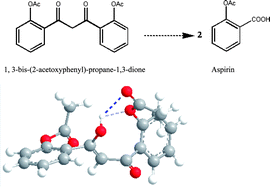Inhibitory effects of 1,3-bis-(2-substituted-phenyl)-propane-1,3-dione, β-diketone structural analogues of curcumin, on chemical-induced tumor promotion and inflammation in mouse skin
Abstract

* Corresponding authors
a
Department of Food Science, China University of Science and Technology, 245 Yen-Chiu-Yuan Rd., Sec. 3, Nankang, Taipei, Taiwan
E-mail:
cclin@cc.cust.edu.tw
Fax: +886 2 2786 4291
Tel: +886 2 2782 1862
b Laboratory for Cancer Research, School of Pharmacy, Rutgers, The State University of New Jersey, Piscataway, NJ, USA
c Department of Food Science, Rutgers, The State University of New Jersey, New Brunswick, NJ, USA

 Please wait while we load your content...
Something went wrong. Try again?
Please wait while we load your content...
Something went wrong. Try again?
C. Lin, Y. Liu, C. Ho and M. Huang, Food Funct., 2011, 2, 78 DOI: 10.1039/C0FO00098A
To request permission to reproduce material from this article, please go to the Copyright Clearance Center request page.
If you are an author contributing to an RSC publication, you do not need to request permission provided correct acknowledgement is given.
If you are the author of this article, you do not need to request permission to reproduce figures and diagrams provided correct acknowledgement is given. If you want to reproduce the whole article in a third-party publication (excluding your thesis/dissertation for which permission is not required) please go to the Copyright Clearance Center request page.
Read more about how to correctly acknowledge RSC content.
 Fetching data from CrossRef.
Fetching data from CrossRef.
This may take some time to load.
Loading related content
